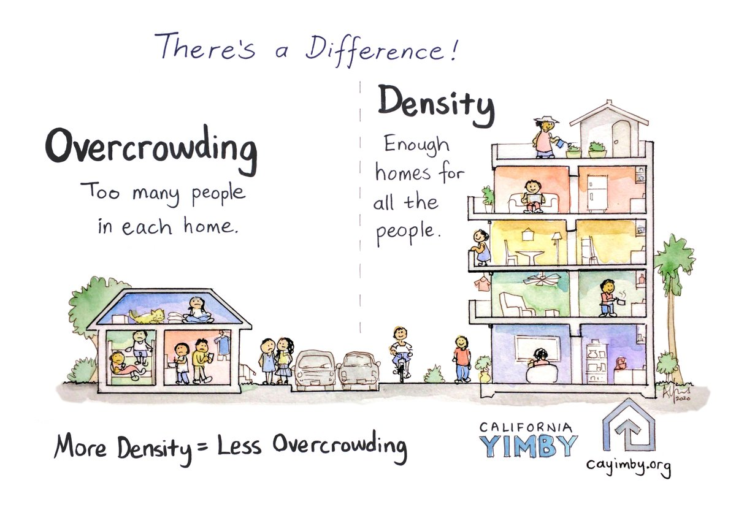Introduction
Density, in the context of environmental psychology, refers to the number of individuals within a defined space. It’s a fundamental concept that shapes human behavior, emotions, and social interaction. Unlike crowding, which is subjective and psychological, it is objective and measurable. Understanding how it impacts social behavior is vital for fields such as urban planning, architecture, education, and health care.
Read More- Personal Space Invasion and Consequence of It
Distinguishing Density from Crowding
As Stokols (1972) emphasized, it’s important to distinguish between density—a numerical measure—and crowding, which is a personal experience of discomfort caused by spatial constraints. Two people might respond differently to the same density based on personality, context, and expectations.

Density vs Crowding
Influence on Human Behavior
- Social Withdrawal: In high-density conditions, people often reduce interaction to maintain a sense of control. Avoiding eye contact, reduced physical touch, and minimal conversation are common.
- Increased Stress and Aggression: As per Baum & Valins (1977), sustained exposure to conditions increases irritability and aggression, especially in environments where escape or privacy is limited (e.g., prisons, dormitories).
- Decline in Prosocial Behavior: It is often linked with a reduction in helping behaviors. Urban residents in densely populated cities are statistically less likely to offer help to strangers, a phenomenon sometimes referred to as the “urban overload hypothesis” (Milgram, 1970).
- Behavioral Adaptation: People often modify their behavior to cope, such as creating psychological boundaries using headphones, bags, or physical barriers.

Population Density
Insights from Animal Behavior
Animal studies by Calhoun (1962) revealed dramatic effects of living in it. His experiments on rats in overcrowded environments showed increased aggression, disrupted mating behaviors, social withdrawal, and even population collapse. These findings, while not directly transferable, signal the deep biological need for personal space and structure.
Implications for Urban Design
Designing with it in mind is essential. Strategic use of space, access to private areas, and green zones can mitigate the psychological impact of it and foster healthier social behaviors.
Conclusion
It profoundly affects social behavior. While not inherently negative, without thoughtful planning and support structures, it can lead to a breakdown in civility, increase stress, and decrease life satisfaction. Recognizing and respecting spatial needs is a fundamental step toward healthier communities.
References
Baum, A., & Valins, S. (1977). Architecture and Social Behavior. Erlbaum.
Calhoun, J. B. (1962). Population density and social pathology. Scientific American, 206(2), 139–148.
Milgram, S. (1970). The experience of living in cities. Science, 167(3924), 1461–1468.
Stokols, D. (1972). On the distinction between density and crowding. Psychological Review, 79(3), 275–277.
Gifford, R. (2007). Environmental Psychology: Principles and Practice.
Subscribe to Careershodh
Get the latest updates and insights.
Join 16,609 other subscribers!
Niwlikar, B. A. (2025, April 24). 4 Important Impacts of High Density on Humans and Animals. Careershodh. https://www.careershodh.com/impacts-of-high-density/
